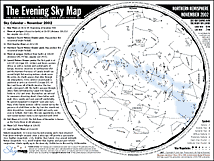
Let's start with Gustave. I know most of us think Wright Brothers when we think First in Flight, but folks in Connecticut can get fussy about that. See, research Jon Brown, building on the work of locals Stella Randolph, Andy Kosch and Retired Air Force Major William J. O’Dwyer, recently showed that Gustave Whitehead was in fact the first to build and fly an airplane. Whitehead's "Number 21" took off on the Bridgeport-Fairfield line on August 14, 1901, two years before the Wright's accomplished the feat. Discovery hosts a wonderful half-sized model of the plane as well as information about Whitehead.
The first visiting exhibit we encountered was the Adventure Science. This indoor low ropes course was a complete blast! The museum's website describes it as "highly interactive" and they aren't kidding. There are zip lines, climbing structures, bridges, ropes and more. The installation is meant to highlight the museum's new Adventure Park, a 5-acre aerial forest park opened last year. Both exhibits were designed by Outdoor Ventures, a Southport Company that specializes in such constructions.
The entire exhibit was designed to demonstrate scientific principles and physics concepts such as gravity, the interaction of forces and more. The exhibit also serves to educate about the natural sciences and structures of the forest, human physiology and even the psychology over interacting with the activities.
According to museum director, Jeffery Bishop, “The Discovery Museum is all about interactive learning and we saw this as an ideal way to capture people’s imaginations like nothing else. This exhibit will prove beyond a shadow of a doubt that science can be a lot of fun!” I'd say they met their goal. This exhibit is aces!
The second visiting exhibit was also full of hands on fun. "Take Flight" had activities for building paper airplanes, rockets and helicopters as well as great launchers to set them moving. My niece Maddie, loved using the metal tubes provided to shape rockets form plain paper. The bicycle pump launcher packed a punch, sending the rocket far and fast.
Caitie loved making heli-cup-ters and flying them in the vertical wind tunnel. Using a simple Italian ice cone, kids cut flaps along the edges to create a whirling flyer. Gwen preferred a more traditional folded paper model. Either way, the girls had a blast sending them zooming into the air over the blower. (Hint: To do this at home, try an inexpensive box fan on blocks and pointed towards the ceiling!)
Before leaving the exhibit we also gave the classic paper airplanes a try. The museum provided instructions for two examples, so that kids could compare how they flew while learning about lift and wing shape. The launcher here was similar to a much sturdier version of the rubber band shooter that's easy to attach to your own paper airplane at home. I loved the use of hula hoops and other targets!
While at Discovery, we also took in a show at the Planetarium. In addition to various educational movies, the museum offers "The Skies Tonight" shows that cover the constellations, planets and other heavenly bodies you can find at that time of year. They even provide a star map to take home, to help you out once you're in the dark. The presenter was very thorough, interesting and knowledgeable, but kept the presentation quick paced enough that it was perfect for kids. (The museum suggested ages 8 and up, but my 7-year-old had no trouble sitting through the presentation.
The presenter also showed a great short movie entitled, "Two Small Pieces of Glass" about the 400 year history of the telescope. Produced by PBS in 2009 for "International Year of Astronomy," this fun film explained all about how telescopes work, how they've changed over time, how they've been used throughout history and how they continue to shape out knowledge of the Universe. Everything from basic refraction and reflection through red shift were covered using language than anyone can understand. And as an added bonus, PBS provides a whole teacher's guide with activities and further resources, so you can keep learning after the show.
As a side note, the film's plot was centered around a star party the two main characters were attending. The presenter encouraged us to look for and attend star parties in our local area. I MUST do this. Luckily, there are websites out there to help you find local star parties!
There are lots of little gems throughout the museum, from "The Sun as Art" photographs to the signed prints by Buckminster Fuller (below). Some of the exhibits are certainly in need of rehab, but still provide a lot of fun and education. Plan at least 3 hours to visit, so you can check out everything offered.
So if you happen to be anywhere near Bridgeport, CT between now and March 2014, you should definitely head over to the Discovery Museum and check out all their great exhibits. Have fun!
(Note: I was NOT compensated in any way by Discovery Museum or its affiliates. I just think it's a cool place. You should take a minute to donate!)












No comments:
Post a Comment